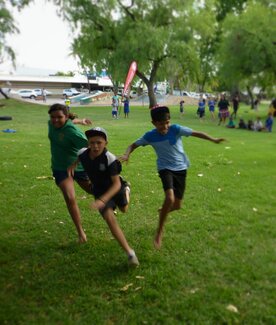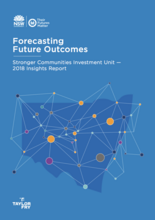

Displaying 281 - 290 of 674
This open access article details a culturally informed approach by sharing the findings of a Cultural Healing Program (CHP) designed, developed and delivered by an Aboriginal Community Controlled Organisation. The program was for Aboriginal survivors of institutional child sexual abuse who had also experienced cultural abuse having been forcibly removed from their families as children and in the process disconnected from their communities, culture and land.
As foster and kinship carers are central to the lives of looked after children, it is important to recognise their unmet needs and the impact of these on the caring task. This article explores these issues by applying a hierarchy of needs to the foster and kinship care context, drawing on the perspectives of those involved, a group of Australian foster and kinship carers.
This editorial piece from the Sydney Morning Herald describes a new report released by the Government of New South Wales, Australia entitled 'Forecasting Future Outcomes,' which "gives a hard financial justification and a possible methodology for early intervention to protect certain vulnerable groups of young people before it is too late."
This report, which was authored by Taylor Fry with support from Their Futures Matter (TFM) - a landmark reform of the Government of New South Wales (NSW), Australia to deliver improved outcomes for vulnerable children, young people and their families - and stakeholder agencies, presents key results and insights from the TFM Investment Model, an actuarial model of future outcomes and costs of providing key government services to children and young people in NSW.
UNICEF is seeking an international consultant for Technical Assistance to Social Welfare Ministries in Child Protection in Nauru, Solomon Islands and Tuvalu.
UNICEF Pacific is seeking a consultant for Child Protection in Education for Pacific Island Countries.
UNICEF Pacific is seeking an international consultant for Child Protection System Policy Development for Pacific Island Countries and Territories.
This country care review includes the care-related Concluding Observations adopted by the Committee on the Rights of the Child.
This article from InDaily highlights findings from a recent report by South Australia’s Guardian for Children and Young People, indicating that children with disabilities are overrepresented in Australia's care system.
This article reports on a study of the relationships between child protection system contact and small area-level deprivation in New Zealand. The study found that, compared to children living in the least deprived quintile of small areas, children in the most deprived quintile had, on average, 13 times the rate of substantiation, 18 times the rate of a family group conference, and 6 times their chance of placement in foster care. Findings suggest that action is needed to address the causes of deprivation, provide services that respond to families living in poverty, and undertake further research to examine the interactions between demand and supply of services across deprivation levels.


